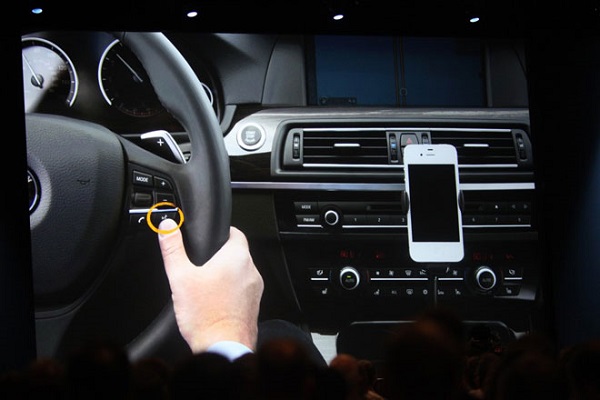In June 2012, when Apple announced Siri Eyes Free, the company claimed that nine car manufacturers would integrate it into their products. The enthusiasm seems to have dropped drastically, as ten months later, GM is the only one that implemented it.
In theory, only two of the nine partners really consider using Siri Eyes Free, namely Honda and Mercedes-Benz. On the other hand, Ferrari FF (four-seater, 4WD), which has no relationship to the first nine, got the iPad mini and Siri as default options. All that it took to make this a reality was an exclusive meeting between Ferrari’s President and Chairman Luca di Montezemolo and Apple’s Tim Cook.

Honda is said to be beta-testing the virtual assistant, while Mercedes-Benz will soon integrate it into its entry-level A-class. BMW, Audi, Jaguar/Land Rover, Chrysler and Toyota either said that they are not able to discuss the matter at this point, or that they need a few more months to implement the platform.
On the other hand, Sara LeBlanc, GM’s program manager for MyLink radio in the Spark and Sonic, claimed that the company hasn’t encountered difficulties while integrating Siri. In an interview she gave for Wired, LeBlanc stated: “We designed the MyLink radio for the Spark and Sonic to have pass-through voice. […] When you hold down the steering-wheel button, it initiates the voice rec on your phone; there’s no actual voice rec in the radio. It was really designed as a way for customers of low-priced cars to have voice rec. We worked with Apple on what Siri should be able to answer and talked with our experts on driver workload. Apple wanted drivers to be able to send and read texts, check their calendar, tune to a song in their iTunes library. They wanted all these additional features so we had to change our software.”
Sara LeBlanc also has a theory on why the other manufacturers need so much time to get Siri into their cars: “If you take the other radios – and this is true for GM as well as other automakers – when the steering wheel control button is pushed, it initiates voice rec embedded in the radio. It becomes more complicated because you have two possible voice recs. That’s what’s taking the other [automakers] longer.”
Another explanation would be that the other manufacturers are reconsidering their partnerships with Apple, as Roger Lanctot, an automotive electronics analyst with Strategy Analytics, noticed: “After the initial euphoria, car makers have come to realize that Siri Eyes Free has its own limitations and has nothing specifically suited to overcoming the challenges of the automotive use case. Car makers were eager to score points at the initial announcement, but Apple has yet to demonstrate an interest or focus on auto-grade, auto-enhanced, auto-specific solutions. This approach means Siri is just another speech recognition that is far from state-of-the-art for automotive use.”
It remains to be seen whether the biggest names in the automobile industry are going to change their mind or not, but at the moment, things don’t look too good for Apple.
If you liked this post, please check Siri’s references to the classics and the HAL 9000-inspired iPhone 4S dock for Siri.










